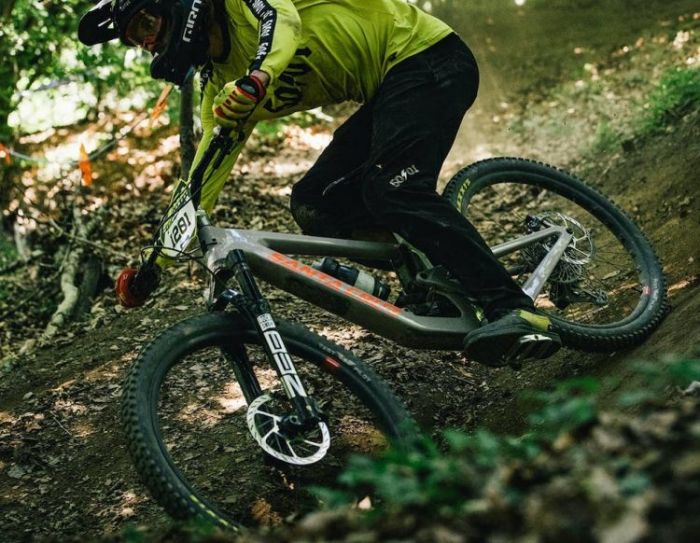Yamaha Civante Review
- MSRP: $3,399
- Frame: Aluminum
- Drivetrain: 2 x 10
- Motor: Yamaha 250W 70Nm mid-drive
- Battery: Yamaha 500Wh
What we like about it: We love the combination of comfort, speed, and efficiency in the Yamaha Civante electric endurance bike.
What we don’t like about it: The handlebar dampening effect with tape wrapping is limited.
Rating (4.7/5)
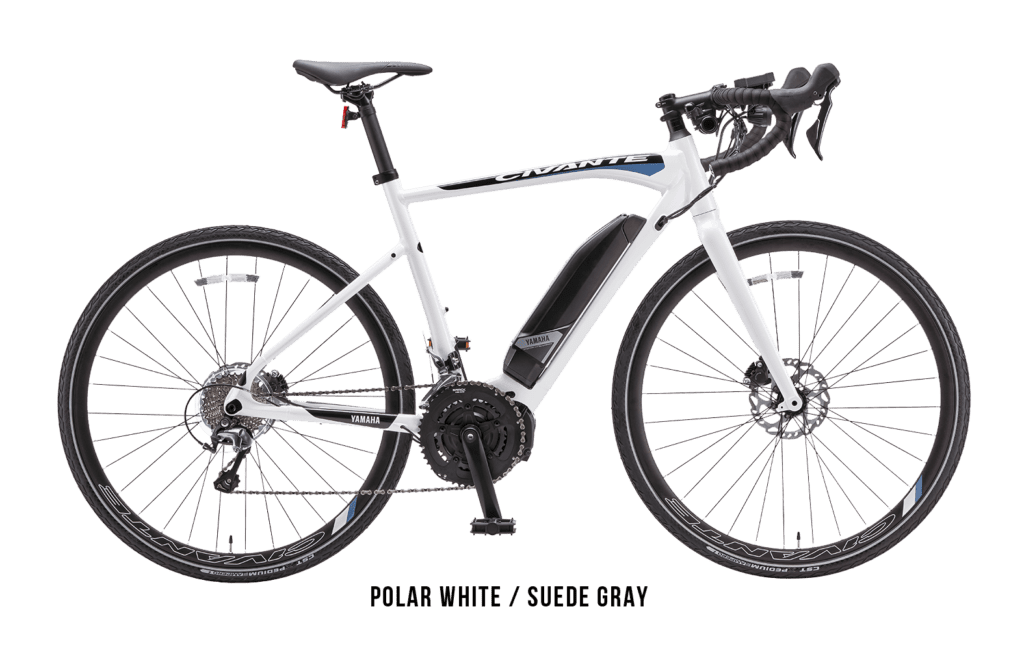
If you’re looking for a powerful electric endurance bike, then choosing the Yamaha Civante is a reliable option. This is Yamaha’s latest offering, backed by 30 years of experience in manufacturing electric bike motors. It offers a comfortable and high-speed ride, making it an exciting toy for avid cyclists, a fast commute option for those looking to get home quickly, and a great exercise companion for fitness enthusiasts.
Now, let’s dive into the riding experience, specifications, features, and other variants of the Yamaha Civante. If you want to explore more bike reviews, stay tuned with us.
Endurance Riding
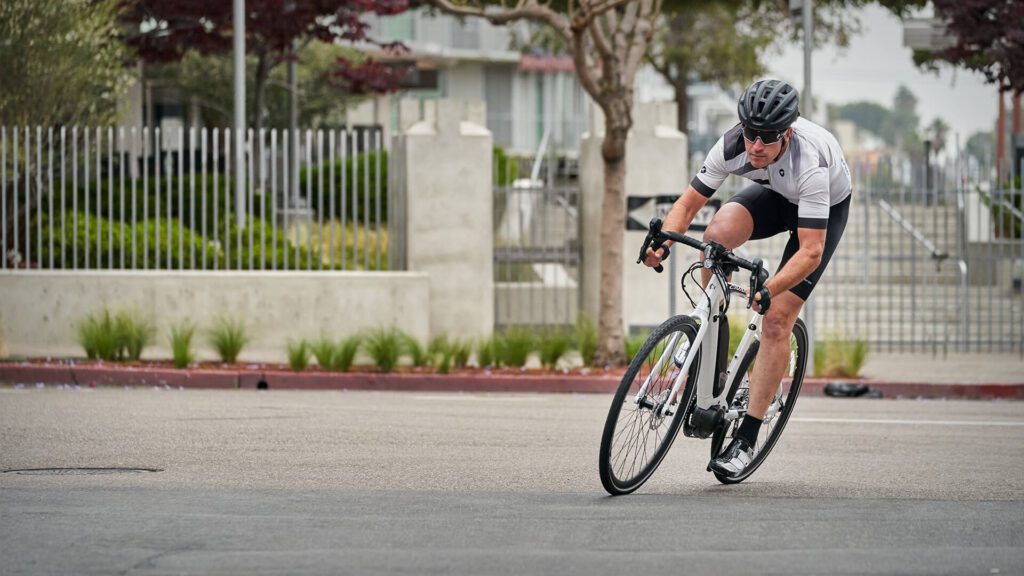
Since this is a road bike, we chose city roads for our testing. We didn’t plan specific routes; instead, we rode casually depending on our mood. After all, we can’t predict what maps other users might have, so randomness seemed appropriate.
Geometric Comfort
The first thing our reviewers noticed about the Yamaha Civante was its remarkably comfortable geometry, and I’m no exception. The 1.42 Stack/Reach Ratio of MD size puts me in a comfortable position, balancing both my body’s posture and pedaling efficiency. With a 74° Seat Tube Angle and a 72° Head Tube Angle, it’s scientifically designed for endurance riding. It allows me to maintain a relaxed posture while engaging my leg muscles for maximum pedaling efficiency.
Road Performance
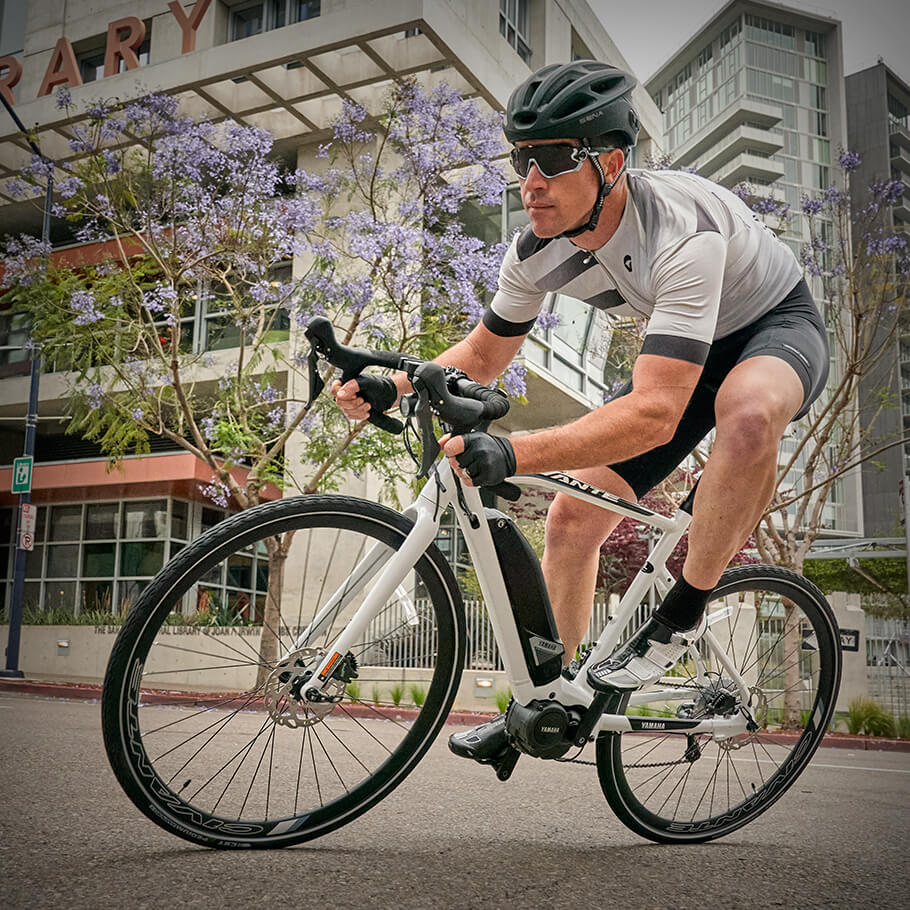
Interestingly, even during casual rides, the routes I tested had distinct features. There were elevation changes, flat stretches, and sudden curves, covering almost all road characteristics. Fortunately, I had a relatively easy time here. Thanks to the powerful Yamaha 250W 70Nm PWSeries SE mid-drive motor, the Yamaha Civante transformed me into a cycling champion on the bike lane. With 70N/m of torque, it supports rapid acceleration and high-speed cruising.
When encountering uphill sections, I instinctively shifted the Shimano Tiagra gears to quickly climb the chainring. Then, I switched to the standard power output mode on the motor to reduce pressure on my legs and increase pedaling speed. The Yamaha Civante didn’t disappoint and swiftly ascended the hill. In the process, I occasionally glanced at the display screen on the handlebars. The speed displayed consistently ranged from 19.3mph to 22.8mph.
Next, I quickly adjusted the gear system to the “+Eco” mode. While this mode didn’t provide a significant boost, it effectively balanced the weight of the bike and the battery. As I approached a downhill section, I could enjoy the gift of gravity’s acceleration. With just a few light pedals, the bike quickly descended.
What impressed me the most was that even when the total mileage on the display reached 30.2 miles, the bike still had plenty of power. And, just like me, I had no intention of stopping; I wanted to keep riding and enjoying the breeze, whether it was my shoulders, legs, or waist – they were all still full of energy.
Comfortable Details
It must be acknowledged that the brilliance of the Yamaha Civante extends beyond its Yamaha hydroformed and butted aluminum tubing with an internal cable/housing routing frame. There are also robust features like the PWSeries SE and Shimano Tiagra 2 x 10 transmission systems, along with thoughtful design details that enhance comfort and performance.
First and foremost, there’s the Yamaha Road Plus Cro-Mo Rail saddle, perfectly matched to the comfortable geometry of the bike. Designed in-house by Yamaha, this saddle is well-suited for endurance road cycling. Its elongated nose and narrow shape provide added support to our forward posture, alleviating pressure on the sit bones.
Next, the 700 x 35c CST XPEDIUM AMPERO tires play a significant role. They not only offer improved traction but also compensate for the limited dampening effect of the handlebars wrapped with only tape.
Lastly, the Yamaha 500Wh battery with Charge-life indicator and Self-diagnosis display is one of the most crucial components of the Yamaha Civante. This powerful battery gives riders the confidence to extend their routes, and importantly, it charges rapidly, taking just 4 hours to return to full power.
Specifications
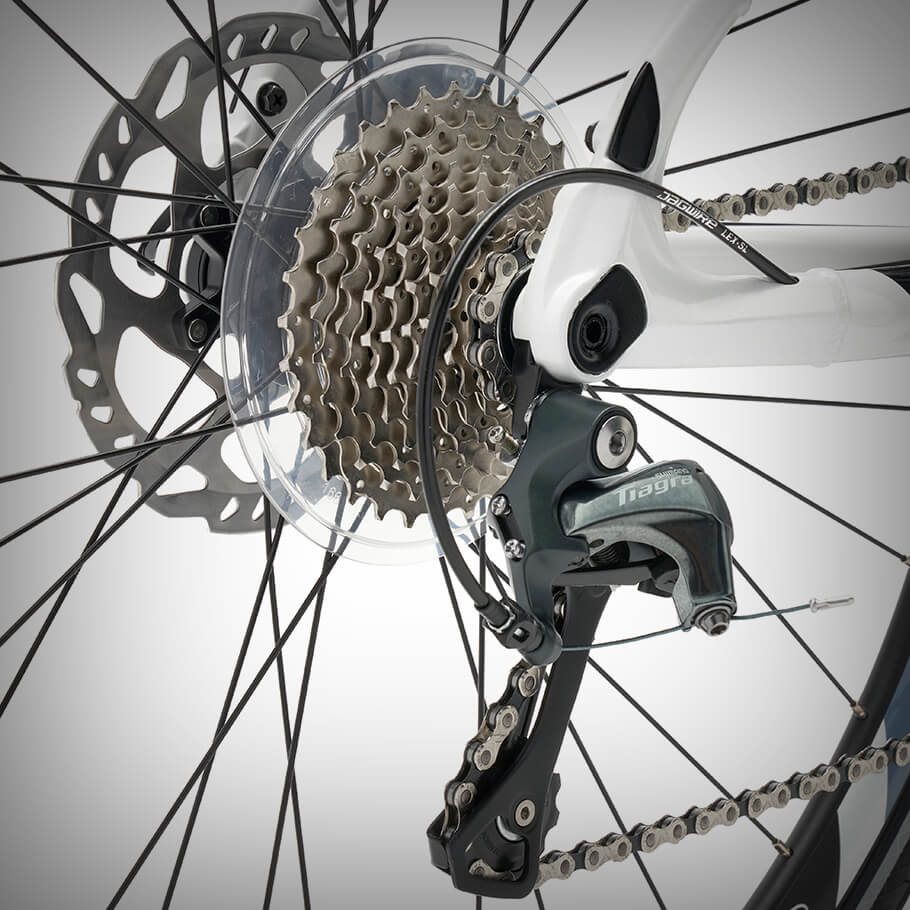
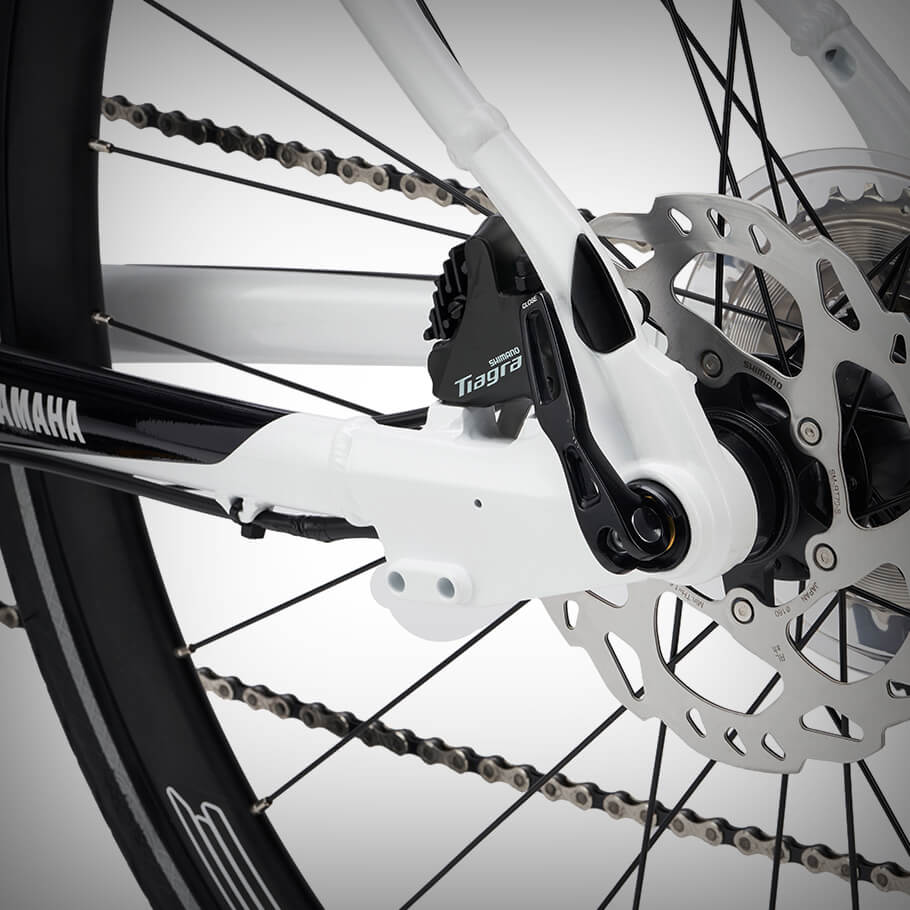
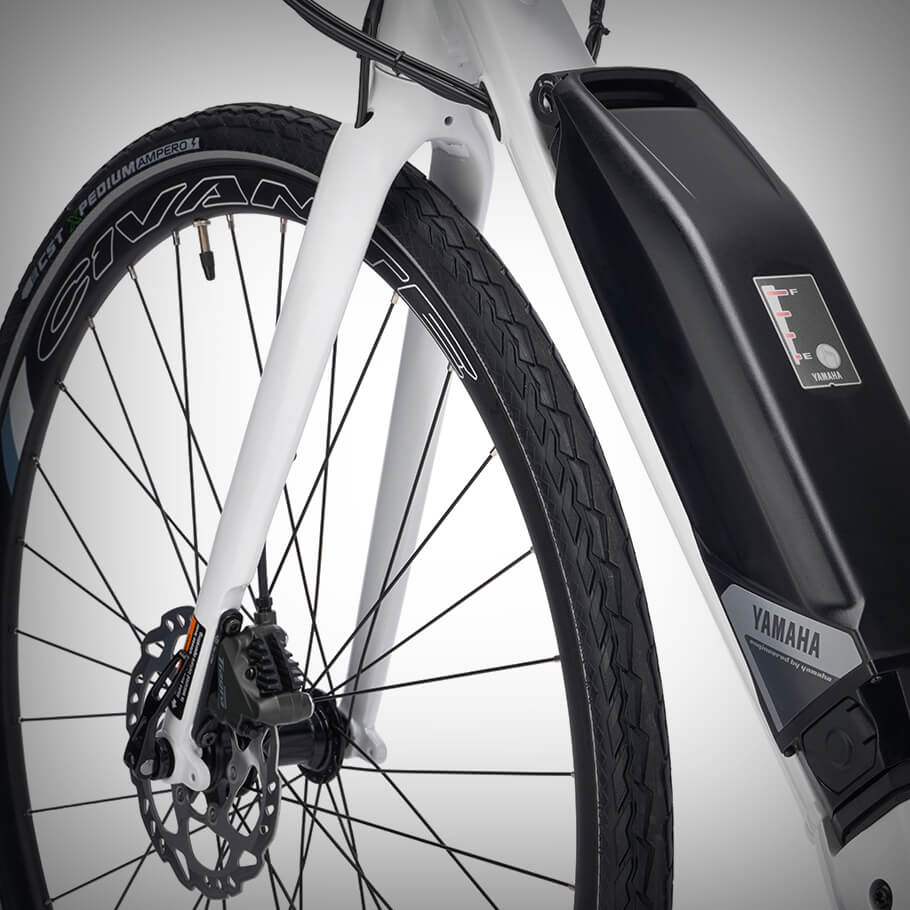
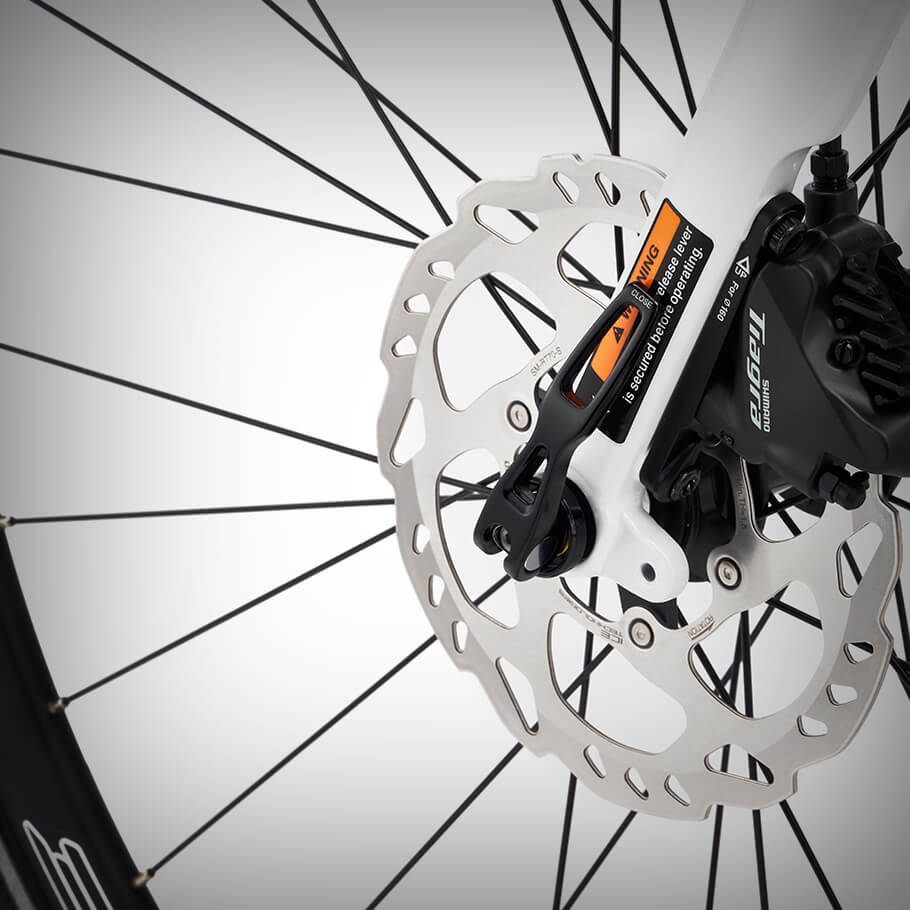
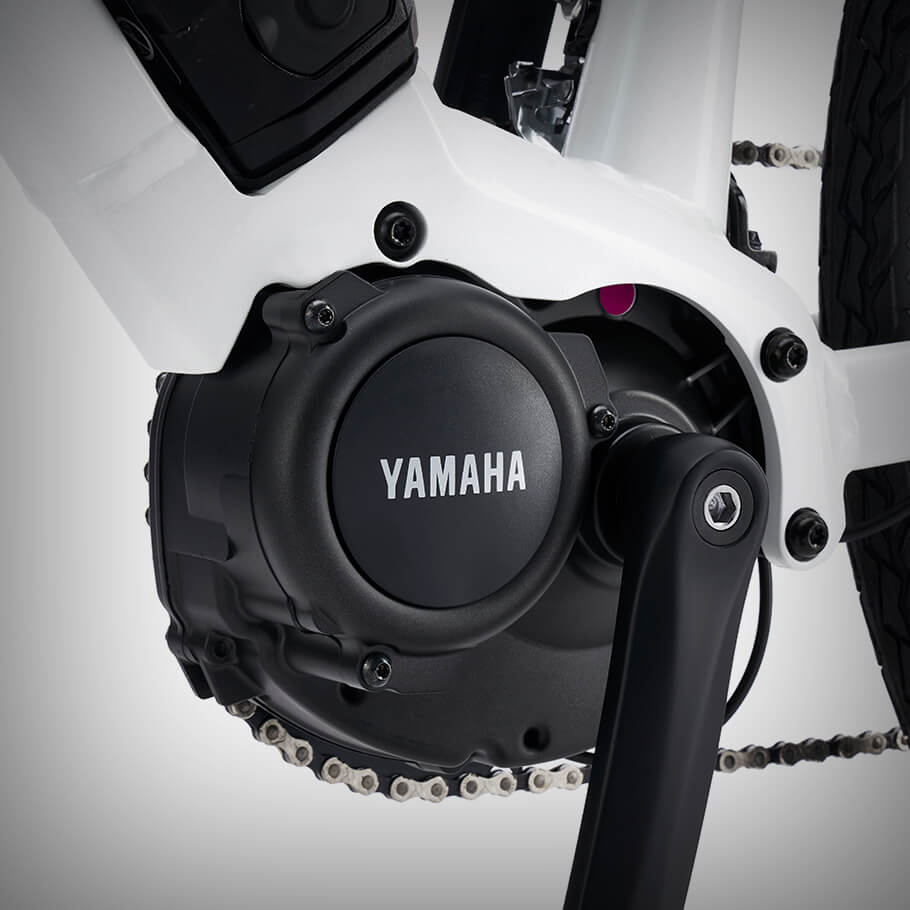
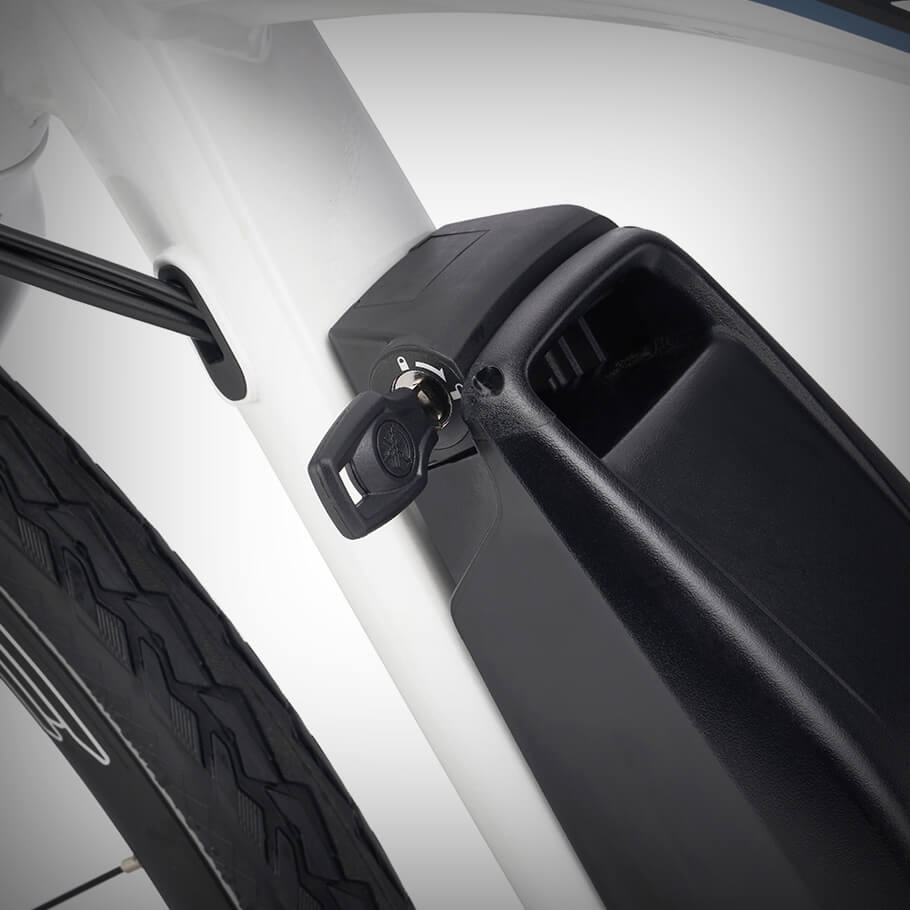
As an electric endurance bike, the Yamaha Civante is unquestionably qualified in terms of configuration and performance.
Firstly, the hydroformed aluminum frame with standard geometry suits the pedaling habits of most riders. This is crucial in assessing a bike’s quality.
Of course, the highlight of the Yamaha Civante is its Yamaha 250W 70Nm PWSeries SE mid-drive motor and Yamaha 500Wh battery. The potent PWSeries SE motor supports a maximum torque output of 70Nm, allowing riders to easily reach speeds of up to 28mph in ideal conditions, which is the maximum speed allowed for Class 3 e-bikes. Additionally, the Yamaha 500Wh battery boasts impressive range capabilities, enabling riders to easily cover over 40 miles in Eco and Std modes.
Furthermore, the Shimano Tiagra Hydraulic Disc Brake Dual Control Lever 2×10 shifters on the Yamaha Civante deserve attention. On one hand, they control the bike’s shifting system, allowing riders to navigate various gear ratios on both ascents and descents. On the other hand, they provide reliable emergency braking to ensure rider safety.
Lastly, the 700 x 35c CST XPEDIUM AMPERO tires with 5-level flat protection and reflective sidewalls are reliable aids. They not only offer outstanding traction but also effectively absorb road surface imperfections.
Video
What do we like about it?
- Sturdy and durable hydroformed aluminum frame.
- Comfortable geometry for endurance riding and pedaling.
- Powerful Yamaha PWSeries SE 250W 70Nm mid-drive motor.
- Strong Yamaha 500Wh battery.
- Reduced charging time to 4 hours.
- Reliable Shimano Tiagra 2 x 10 transmission system.
- Quick-acting Shimano Tiagra Hydraulic Disc brakes.
What we don’t like about it?
- Limited handlebar dampening effect.
- Not exceptionally lightweight.
- Only available in three sizes.
FAQ
- How much does this bike weigh?
While not overly heavy, the Yamaha Civante is not exceptionally lightweight either, weighing in at 43 pounds. However, this weight is considerably lighter compared to typical electric bikes.
- How long does it take to charge this bike?
For those who dislike long waits, it is an excellent choice as it has reduced charging time to just 4 hours.
- What are the dimensions of the Yamaha Civante?
The sizing of the Yamaha Civante is more tailored to individuals of medium build. It may not be very accommodating for riders who are too tall or have smaller body frames, as it comes in only three size options. Below is the size chart for reference, but it’s important to note that the best way to find the right fit is to try it out.
| Size | Rider height |
| SM | 5’2″ – 5’7″ |
| MD | 5’6″ – 5’11” |
| LG | 5’9″ – 6’2″ |
Yamaha Civante Specs
Build
| Frame | Yamaha hydroformed and butted alluminum tubing, Internal cable/housing routing, Accessory mount, Fender and Rack compatible, 3-bolt motor mount, 12 x 142 rear spacing, Integrated speed sensor harness Color: Polar White / Suede Gray |
| Fork | Alloy, 12mm thru-axle, fender compatible, internal cable housing routed, 1 1/8in steerer |
| Headset | Integrated headset with 30mm headset spacers |
| Stem | Yamaha Alloy 4-bolt faceplate, 31.8 diameter, 80mm length (53cm, 55cm), 100mm length (58cm) |
| Handlebar | Alloy drop bar, 31.8mm diameter, 40cm width (53cm), 42cm (55cm and 58cm) |
| Saddle | Yamaha Road Plus Cro-Mo Rail |
| Seatpost | Alloy 30.9 x 260mm (S), 315mm (M), 350mm (L) with 2-bolt adjustable tilt saddle rail clamp |
Groupset
| Rear Derailleur | Shimano Tiagra GS 10-Speed |
| Front Derailleur | Shimano Tiagra (2 x 10) Braze-on |
| Crank | 50/34T E-Ring 110 BCD, Square taper, 165mm (53cm), 170mm (55cm and 58cm) |
| Shifters | Shimano Tiagra Hydraulic Disc Brake Dual Control Lever 2×10 |
| Cassette | Shimano 11/32T |
| Chain | KMC e10 Sport |
| Brakes | Shimano Tiagra Hydraulic Disc 160mm SM-RT68 Centerlock Rotor |
Wheels
| Rims | 700c Alloy aero rim 27mm depth, Rim width: 22.2mm (OUTSIDE) 17mm (INSIDE) |
| Spokes | Spokes SUS304 |
| Front Hub | Anodized, Centerlock brake mount, front hub 12 x 100 TA, rear hub 12 x 142 Shimano freehub and Yamaha Bicycles Speed Sensor |
| Rear Hub | Anodized, Centerlock brake mount, front hub 12 x 100 TA, rear hub 12 x 142 Shimano freehub and Yamaha Bicycles Speed Sensor |
| Tires | CST XPEDIUM AMPERO 700 x 35c Level-5 Flat Protection Reflective Sidewall approved for eBike use, PV Tube |
Electric Components
| Motor | PWSeries SE, Center mount, Square taper spindle, Triple Sensor System with integrated speed sensor as part of rear hub, Weight: 7.71lb, Rated power: 250W (Nominal), 500W (Max), Max torque: 70Nm, Max cadence support: 110rpm, Max speed support: 28mph, Support modes: ECO+, ECO, STANDARD, HIGH |
| Battery | Yamaha 500Wh with Charge-life indicator and Self-diagnosis display. Side-exiting dock station with anti-vibration mounting plate, Weight 6.61lb. 500Wh 36V, 4-hour charge time |
Comparison Table
| Bicycles | Click view | Motor | Drivetrain | Brakes | Tires |
| Orbea GAIN D40 | Click view | Mahle motor hub X35 Plus 25kmh | 2 x 10 | Shimano Tiagra 4770 Hydraulic Disc | 700 x 30c |
| Trek Domane+ AL 5 | Click view | Hyena hub drive motor, 40Nm, 250W | 2 x 11 | Shimano 105 hydraulic disc | 700 x 32c |
| Ribble Endurance SL e – Sport, Shimano 105 | Click view | Yamaha 250W 70Nm mid-drive | 2 x 11 | Shimano R7070 Fat Mount Hydraulic Disc | 700 x 35c |
| Cannondale Synapse Neo 2 | Click view | Bosch Active Line Plus 250W w/Cannondale ACR software | 2 x 10 | Bosch Active Line Plus 250W w/Cannondale ACR software | 700 x 32c |
Yamaha Civante vs. Orbea GAIN D40

Compared to the aluminum fork of the Yamaha Civante, the Orbea GAIN D40 comes with a carbon fiber fork that shows more commitment. When riding on the road, cyclists are bound to encounter small pebbles, stones, or other obstacles. They can, to some extent, cause vibrations and lead to fatigue.
However, this doesn’t necessarily mean that the Orbea GAIN D40 offers a better value or more options. As an endurance electric bike, it has a battery capacity of only 248Wh and a Mahle motor hub X35 Plus motor that provides a maximum speed of just 25 km/h. This is not friendly for long-distance rides that seek higher speeds.
Yamaha Civante vs. Trek Domane+ AL 5
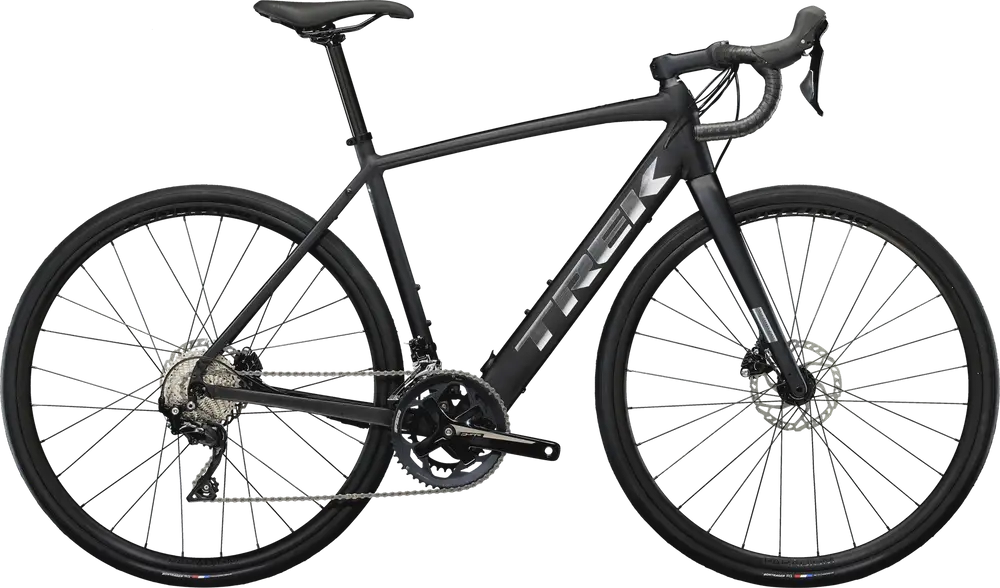
For those looking for greater adaptability on the frame, the Trek Domane+ AL 5 is an excellent choice. With a range of up to six sizes, it aims to provide a custom-like comfort for riders with heights between 5’1″ and 6’4″. Additionally, its geometry is more relaxed. The maximum 1.68 Stack/Reach Ratio speaks to its comfort level. Riders can enjoy endurance riding with a more upright seating position, which makes pedaling feel lighter. Furthermore, the robust Shimano 105 kit is well-suited for road cycling.
However, the Yamaha Civante may not be as friendly for riders expecting more electric power assistance. This is because its Hyena hub drive motor supports a maximum output of 40Nm. Fortunately, such power output is often sufficient to balance the weight of the frame and the battery pack in many situations. Therefore, in comparison to the Yamaha Civante, it offers good value for those seeking more power assistance.
Yamaha Civante vs. Ribble Endurance SL e – Sport, Shimano 105
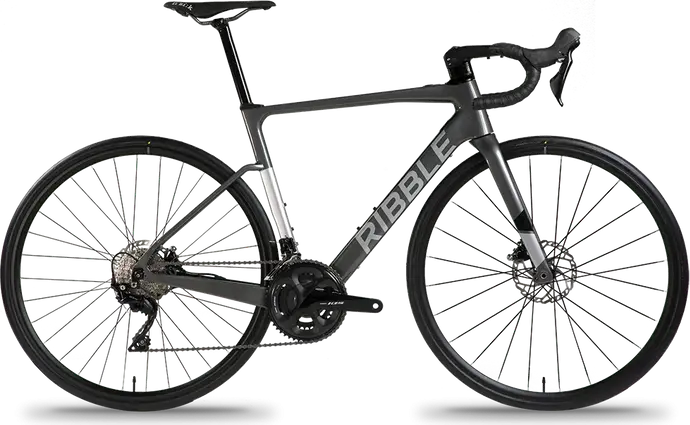
For riders seeking a lightweight endurance electric bike, the Ribble Endurance SL e-Sport with Shimano 105 is worth considering. With its full carbon fiber frame and lightweight Panasonic electric assist system, this bike manages to keep its weight at around 26.3 pounds. This is an impressive figure. To match its notable performance, it features Shimano 105 components and MAHLE SmartBike Systems X35 M1 wheels.
However, the outstanding performance of the Ribble Endurance SL e-Sport, Shimano 105 comes at a higher price point. Priced at up to £3,199, it may not be an easy buy for every enthusiast. Most importantly, it’s designed more for those who love aggressive riding. For riders who prefer an upright riding position, its Stack/Reach Ratio of less than 1.39 might be intimidating.
Yamaha Civante vs. Cannondale Synapse Neo 2
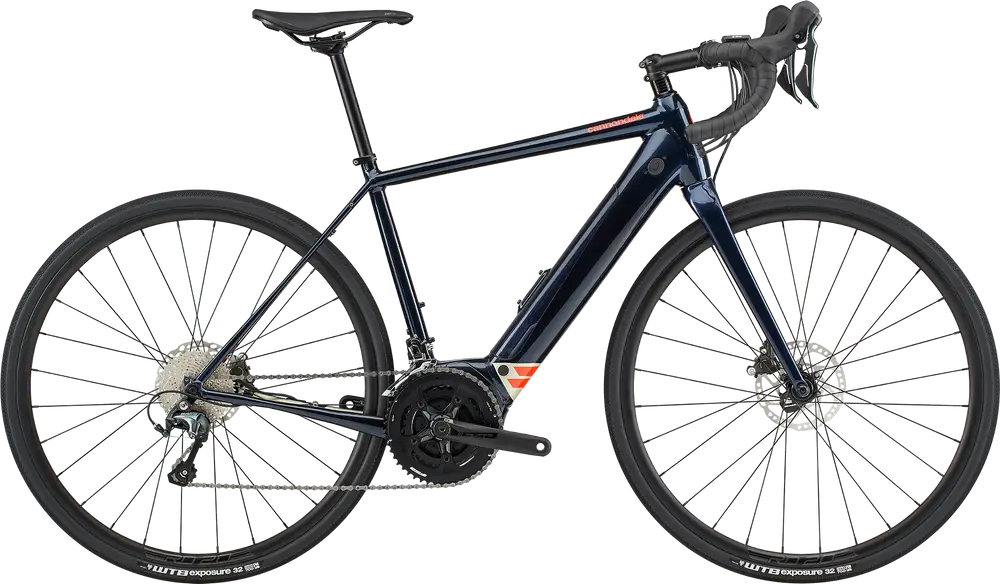
Indeed, speaking of expensive prices, the Cannondale Synapse Neo 2 can be quite a wallet-buster. Its configuration and performance often don’t quite justify the price tag. While it adopts Cannondale’s classic aluminum frame and swaps the front fork for carbon fiber to increase comfort, it’s still a stretch to accept its Shimano Tiagra 2×10 transmission system, especially considering the hefty price tag of up to £3,500.
Therefore, the Cannondale Synapse Neo 2 certainly doesn’t offer better value for money compared to the Yamaha Civante. After all, having just a carbon fiber fork, Bosch 250W 50Nm mid-drive motor, and Bosch 500Wh battery isn’t enough to surpass the latter.
Learn More: Is Cannondale Synapse Carbon 105 Worth Buying? [2022 Cannondale Synapse Carbon 105 Review]
Summary
There’s no denying that the Yamaha Civante is indeed lightweight compared to traditional endurance bikes. However, for commuters looking to break speed barriers, reach their destinations faster, or those seeking more external assistance for fitness, it’s a reliable and viable choice. With its durable aluminum frame and mid-range components, the Yamaha Civante becomes an ideal companion for many road endurance rides.
Finally, if you enjoy our content, feel free to share it with your friends. If our content has been helpful to you, you can subscribe by clicking the email subscription button below! Thanks for your support!

![[Orbea URRUN 10 20mph Review] – Best Used By People Who Enjoy Riding To Get AFeel For The Mountains!](https://bestbikeselect.com/wp-content/uploads/2023/09/2023-Orbea-URRUN-10-20mph-35_-1024x1024.jpg)
![[Specialized Turbo Como 5.0 Review] – Good Choice?](https://bestbikeselect.com/wp-content/uploads/2023/08/2023-Specialized-Turbo-Como-5.01_-1024x1024.webp)
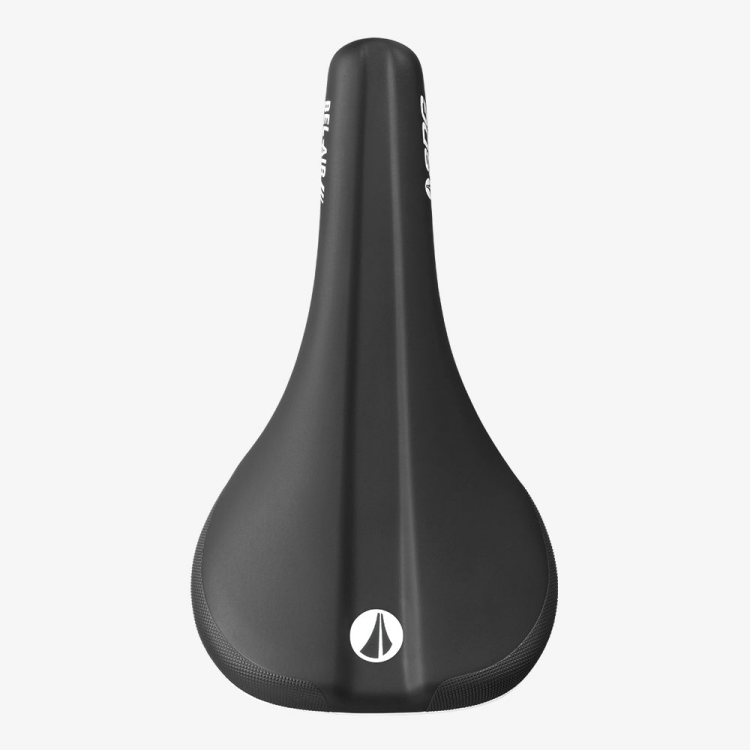
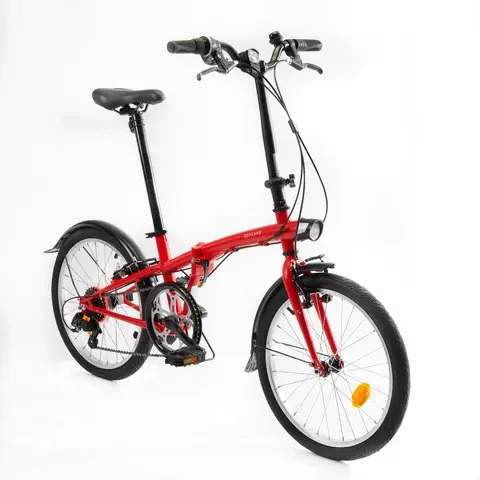
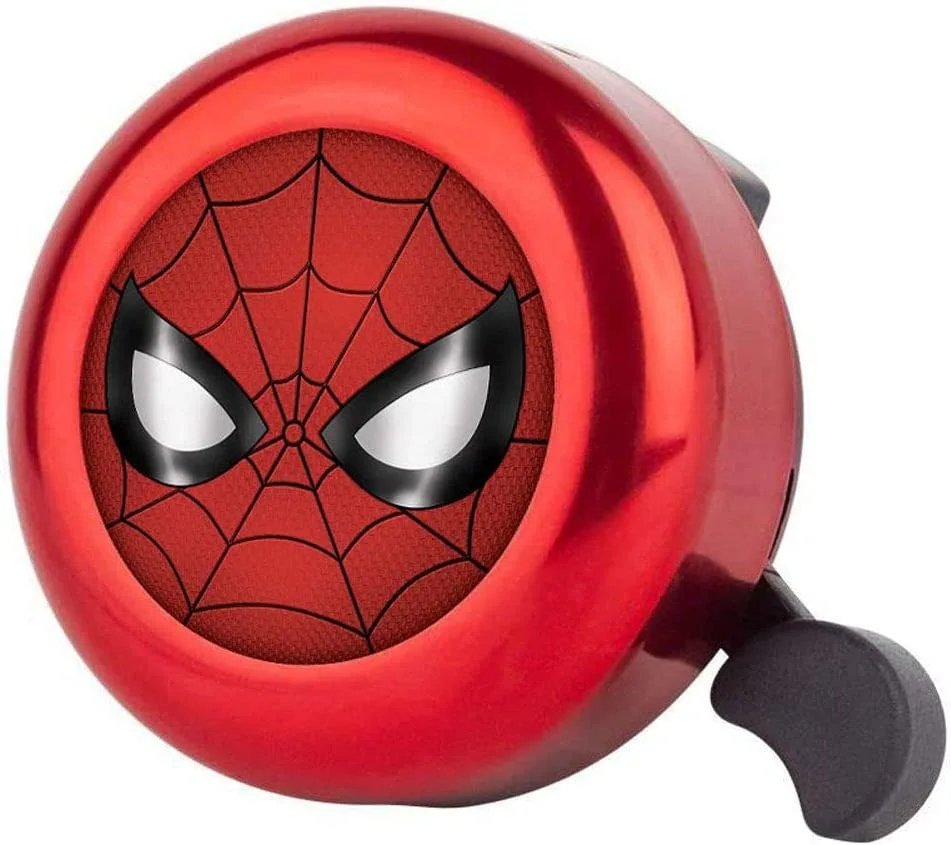
![2025 Built for Champions:[Orbea ORCA M21eTEAM PWR Review]](https://bestbikeselect.com/wp-content/uploads/2025/01/ORCA-M21eTEAM-PWR-1024x885.jpg)
![2025 Conquer Any Trail [Santa Cruz Bronson R Review]](https://bestbikeselect.com/wp-content/uploads/2025/01/Santa-Cruz-Bronson-R-1-1024x768.webp)
![2025 The All-Terrain Beast [Santa Cruz Hightower 3 MY24 Review]](https://bestbikeselect.com/wp-content/uploads/2025/01/Santa-Cruz-Hightower-3-MY24-1024x768.webp)
![The Best Comfortable Leisure Bike of 2025 [ Trek Verve 2 Lowstep Gen 5 ]](https://bestbikeselect.com/wp-content/uploads/2024/12/Verve-2-Lowstep-Gen-5-02-1024x681.png)
![2025’s Top Endurance Bikes [Cannondale Synapse Carbon 3 L Review]](https://bestbikeselect.com/wp-content/uploads/2025/01/Cannondale-Synapse-Carbon-3-L-1-1024x627.webp)
